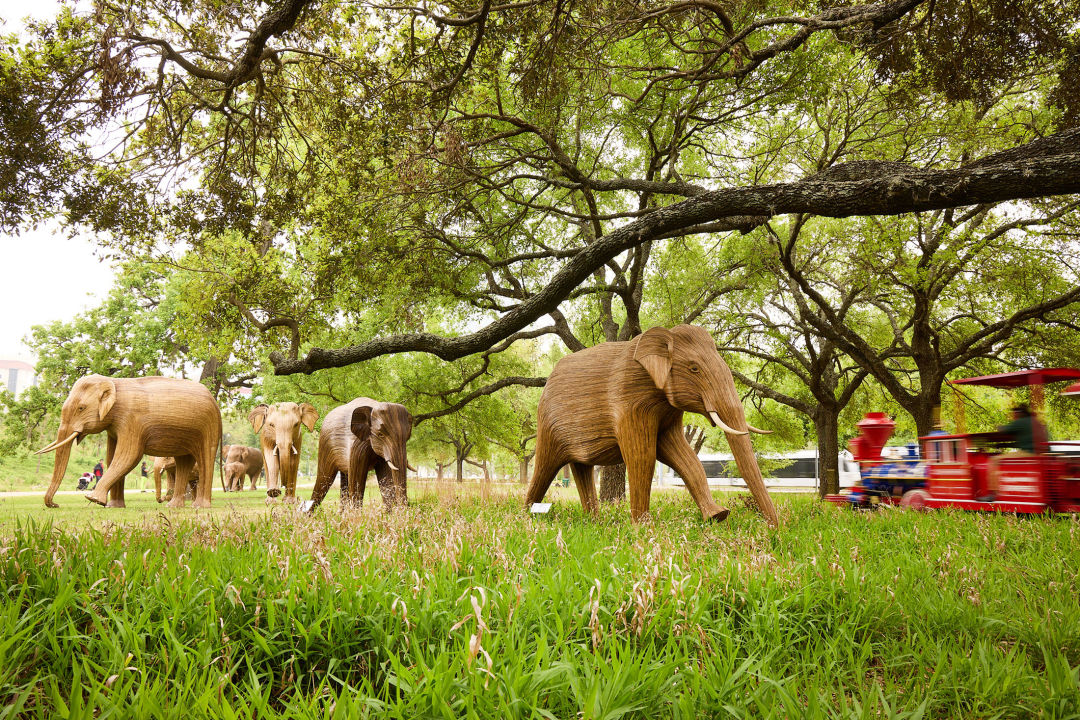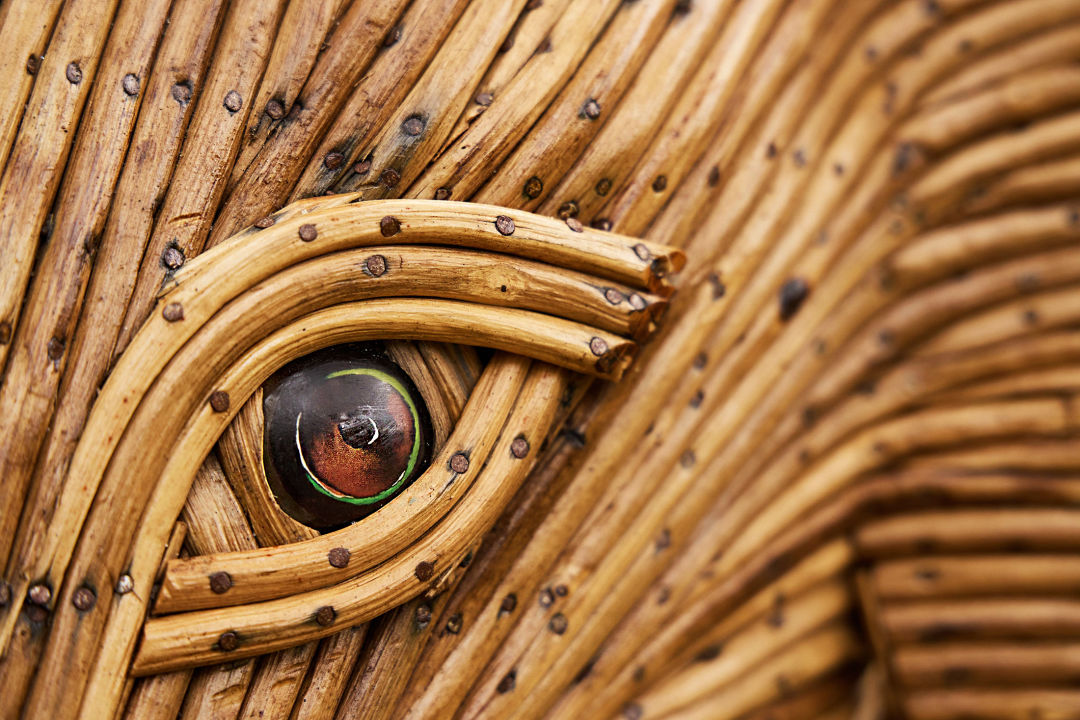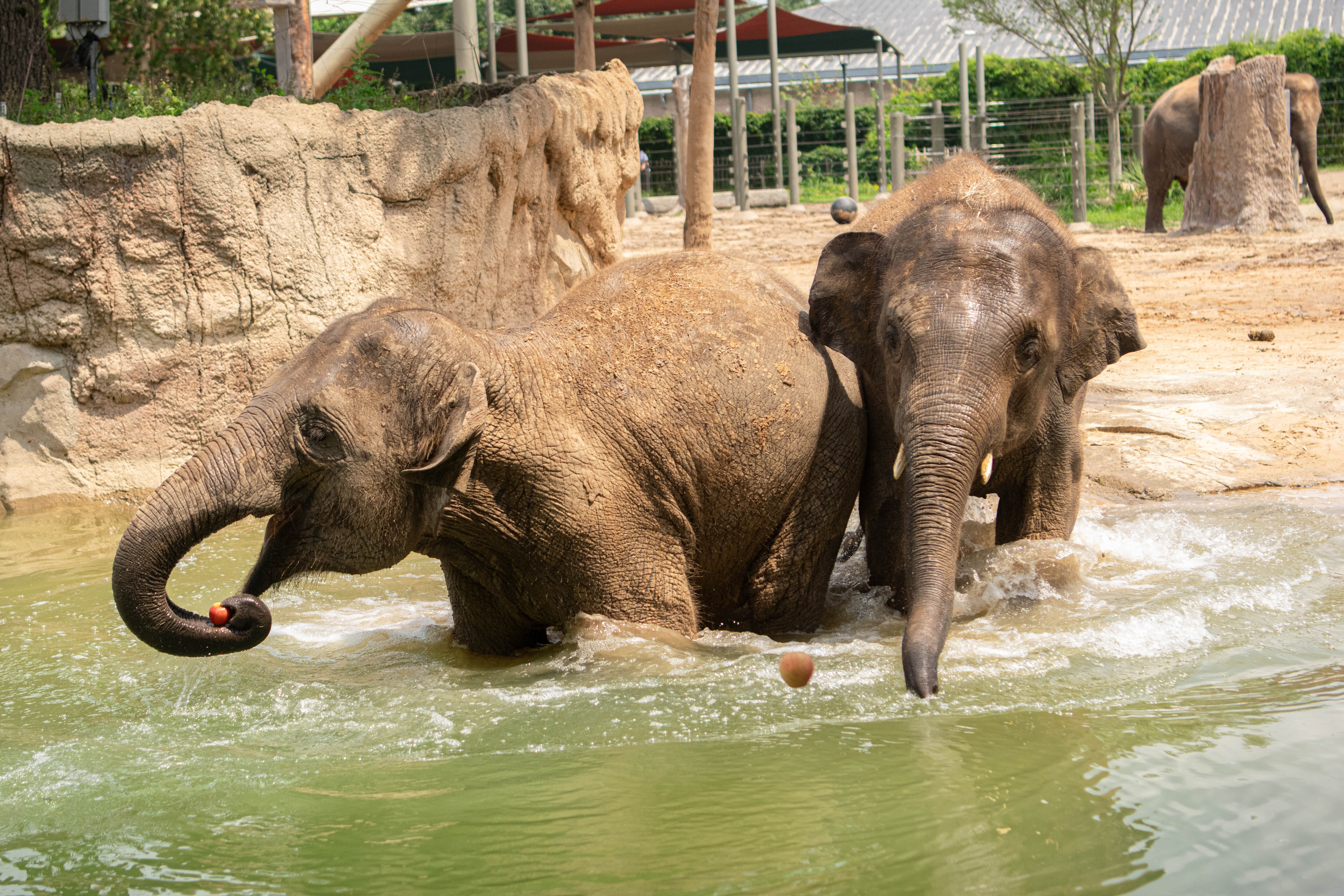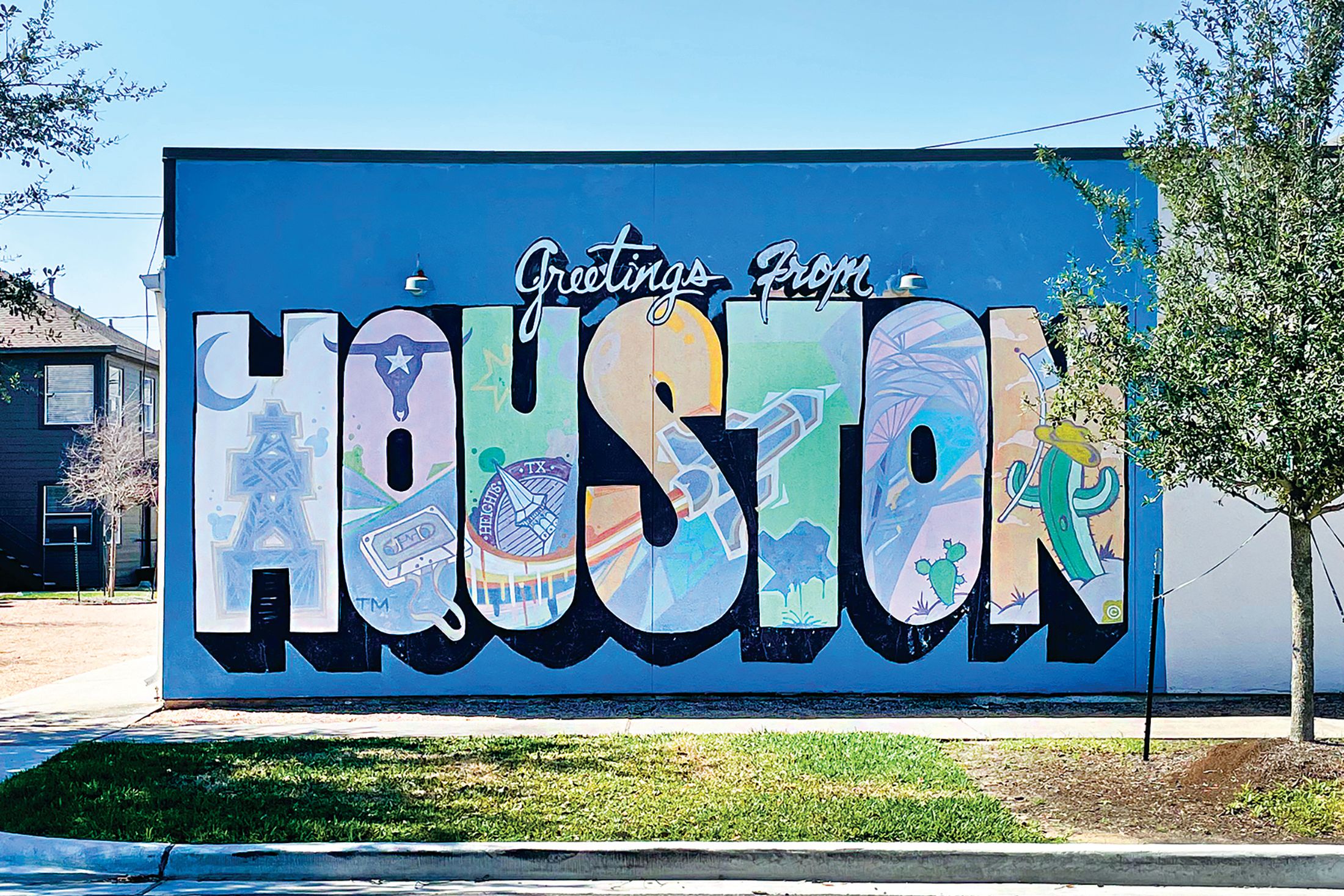Walk Among Giants with the Great Elephant Migration in Hermann Park

Image: Nicki Evans
Houstonia’s The Must List tells you about something going on in Houston that you absolutely cannot miss.
A herd of 100 Indian (and one African) elephants appears to be moving through Hermann Park and the Texas Medical Center right now. No, the beloved pachyderms at the zoo haven’t escaped and taken to grazing on the well-manicured lawns of the Museum District. These inanimate beauties traveled all the way to Houston from Nilgiri Hills in South India, via pit stops in Rhode Island, New York, and Florida, as part of the Great Elephant Migration public art installation by the Real Elephant Collective.
Each elephant, from the largest bulls to the tiniest calves, is constructed out of invasive lantana camara shrubs, with tusks made from another invasive wood. It takes a team of between six and 10 artists around six to eight weeks to craft one sculpture. Nilgiri Hills’s own elephants serve as the models—every sculpture in the Great Elephant Migration corresponds directly to a member of the real herds that coexist peacefully alongside the local Indigenous communities. The installation encourages getting up close to the animals; the more you explore, the more you notice the differences, both significant and subtle, between every individual.
Such lovingly rendered details make the work, when taken as a whole, all the more poignant in its messaging: Humans and animals live in concert with one another, not opposition. Such mindfulness opens us up to understanding every elephant (or alligator, or grackle…) as possessing a unique personality, and occupying their own space both on their own and as part of a community.
“Whenever you see an elephant, every person will interact with it in some way. For 4,000 years, people have had a relationship with elephants. They’re one of the most intelligent nonhuman species,” says Dr. Tarsh Thekaekara, director of the Real Elephant Collective. “They have very similar social structures and kind of bonds with each other that I think can resonate with people quite a bit.”

Image: Nicki Evans
Lantana camara is not an uncommon sight around Houston. Native to Central and South America, the plant’s tiny bundles of yellow and red flowers mainly pop up in gardens, where they frequently attract hungry butterflies. According to Hermann Park Conservancy senior director of green space Iris Clawson-Davis, even though Houston sits in a subtropical climate zone, the periodic freezes help prevent the plant from sprouting out of control. That isn’t the case in South India.
Dr. Thekaekara notes that the shrub first came to India via the British, who used it to plant hedgerows since the local livestock didn’t enjoy eating it. But it also proved toxic to the country’s wildlife, and overgrew to the point of choking out the indigenous plants and destabilizing their surroundings. Great Elephant Migration allows the people of Nilgiri Hills a chance to reclaim their environment and culture.
“In creating these sculptures, a large number of Indigenous people gain a livelihood,” Dr. Thekaekara says. “They also clear the forest of a dangerous invasive, so they benefit the forest ecosystem.”
The installation also raises money for ecological causes around the world; the collective has given around $1 million in grants to organizations like Wild Bird Fund, ReefLine, Lion Guardians, and Save the Bay. Ruth Ganesh, cofounder of both the Great Elephant Migration installation and the Real Elephant Collective, refers to this initiative as a “peace chest,” and hopes to eventually raise $10 million by the end of the work’s tour of the United States (it heads to Jackson Hole, Wyoming, in May). Each elephant in the herd is for sale. It’ll set you back anywhere from $8,000 for a calf to $22,000 for a bull.
One of the most in-demand models is the red-tinted calf—one of which walks with the Hermann Park herd—that Ganesh and her team have nicknamed after the quite ginger Duchess of York, Sarah “Fergie” Ferguson, who also patronizes the Great Elephant Migration initiative. The red was the result of some varnish drying in an unexpected way, but the official word is that it represents an elephant who recently took a mud bath.
“Lots of art collectors and exciting celebrities have gotten behind [Great Elephant Migration]. Cher’s got an elephant. It’s been quite something,” Ganesh says.

Image: Nicki Evans
She refers to elephants as “the most creative-looking animal on the planet,” and, along with Dr. Thekaekara, views them as ideal ambassadors for Real Elephant Collective’s mission of peacefully sharing the world with our animal brethren. Already, in India, Dr. Thekaekara notes that many Indigenous people have returned to a coexistence model. When his son traveled to Bangalore, many of the residents went inside after 6pm to allow for “elephant time,” where the herd can graze in peace. They don’t eat coffee or tea plants, so farmers don’t have to worry about losing their all-important crops. In other parts of the country, residents walk past crocodiles and leave their nests alone—the reptiles won’t react in a potentially dangerous way if they don’t feel threatened, so people simply give them nothing to fear.
“Thinking of [animals] as individuals and relating with them as individuals, I think, is going to be a game changer in how we are able to negotiate with the natural world better,” Dr. Thekaekara says.
Know Before You Go
Great Elephant Migration will be on display at Hermann Park from April 1 through April 30. Admission is free.




